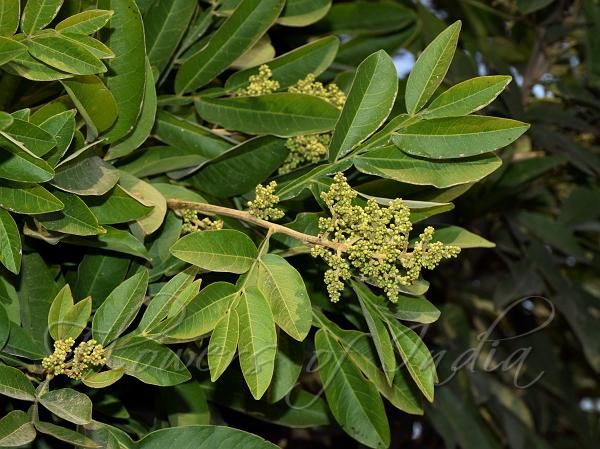|
| Western Soapnut |
|

|

| File size | 744501 |
| Original date | 12/26/14 1:13 PM |
| Resolution | 2048 x 1536 |
| Flash | Flash fired, return detected |
| Focal length | 70.0mm |
| Exposure time | 1/200s |
| Aperture | 13.0 |
| Focus Distance | |
| Metering Mode | Center weighted average |
| Camera make | NIKON CORPORATION |
| Camera model | NIKON D5300 |
| Sensor type | OneChipColorArea |
|
|
|
|
Photo: |
Botanical name: Sapindus saponaria Family: Sapindaceae (Soapberry family)
Synonyms: Sapindus indica Poir., Sapindus peruvianus
Synonyms: Sapindus indica Poir., Sapindus peruvianus
Western Soapnut often grows in clumps or thickets
reaching about 6 m in height in the western part of its range. Solitary
trees though can grow as tall as 15.2 m in height. In the western part
of its range it is most often found growing at the head of prairie
ravines, the margins of woodlands, the edges of fields or on rocky
hillsides. The leaves of the soapberry are alternate, pinnately
compound, thick and leathery but deciduous, 20-38 cm, made up of 6 to
20 narrow lanceshaped leaflets with smooth margins, long tapered tips,
and uneven wedge-shaped bases which are 5-13 cm long and 2-4cm wide.
The inflorescence are dense at branch-ends panicles of small white
flowers 15-20 cm long. Flowering occurs in May-June for var. drummondii
and in November for var. saponaria. The fruit occur in large pyramidal
clusters at the ends of branches. Each golden colored fruit is between
3 cm to 3.6 cm in diameter and becomes translucent and wrinkled when
fully mature and contains a single black seed about 9 mm in diameter.
Fruits of var. drummondii ripen in October and often remain on the tree
until spring, while those of var. saponaria ripen in spring. The
drupes, which lather when combined with water, were once used in
varnish, floor was, and soap. In some parts of Mexico, Western Sopanut
is still preferred for washing hair and delicate clothing, even after
the introduction of commercial soaps. Pounded fruits from the soapberry
are used in Africa to poison fish without altering their taste. Western
Soapnut is native to South America.
| Identification credit: Amber Srivastava | Photographed in Sant Asharamji Ashram, Lucknow. |
• Is this flower misidentified? If yes,